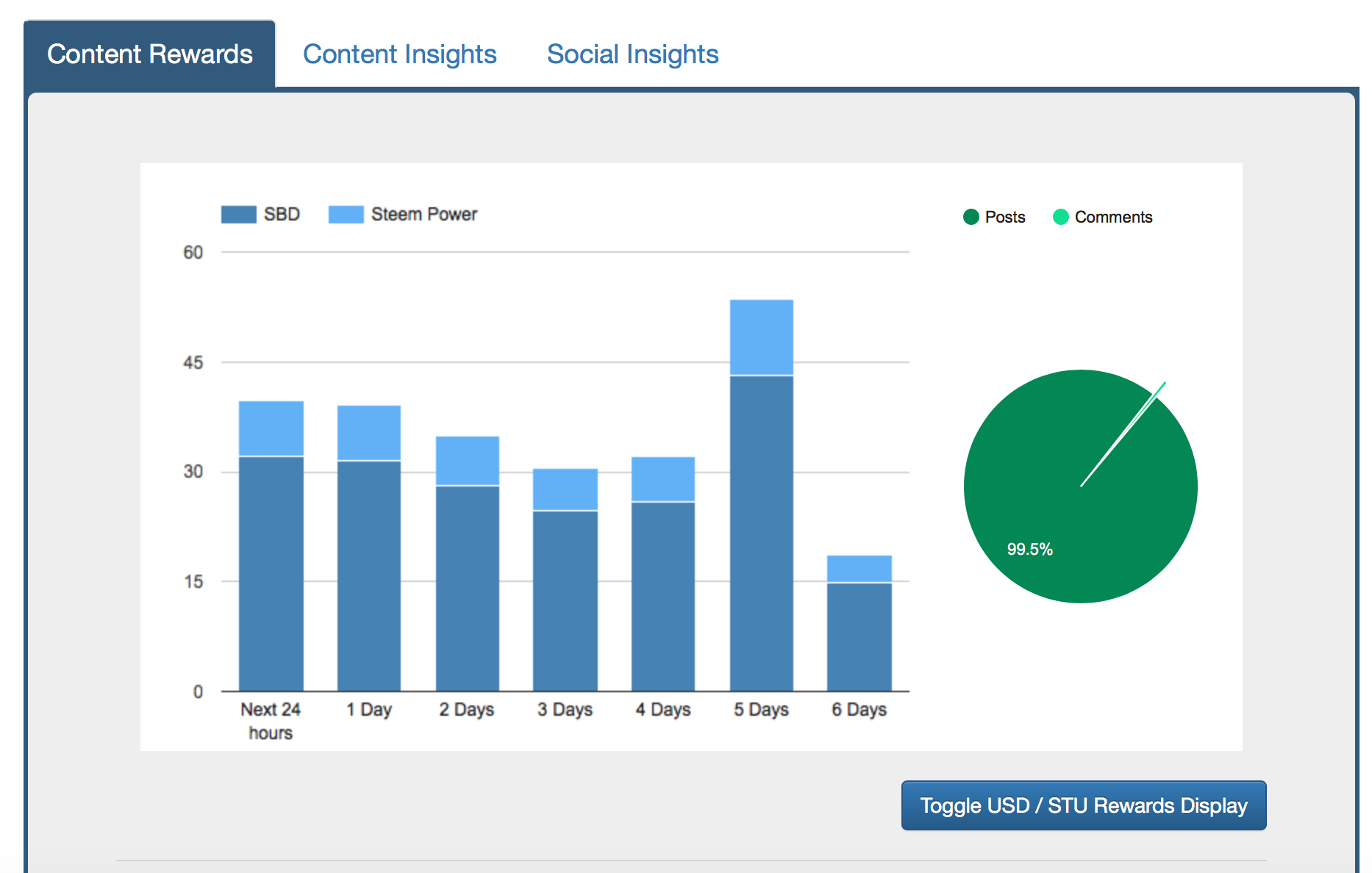Yesterday I posted about the fact that rewards on the Steemit platform are now paid in a combination of SBD / STEEM + Steem Power. The STEEM part was small, compared with SBD.
Today, as you can see from the screenshot below, the balance switched drastically in favor of STEEM.

A few people asked why this change and what are the mechanics behind the payouts.
Here's how it goes (and, most important, why this is happening):
SBD is intended to be a stable currency, pegged to $1. But it's not a hard-pegged currency, meaning there isn't a fiat deposit somewhere, mirroring the total amount of SBD in circulation with an equal amount of US dollars (as Tether claims to have for their stablecoin). Instead, 1 SBD is pegged to 1$ worth of STEEM, which makes it basically a debt instrument.
So, if STEEM is traded at 1$, 1SBD will be equal 1 STEEM, but if STEEM is traded at $0.5, 1 SBD will be equal 2 STEEM. Meaning that it will "put a debt pressure" on STEEM, equal to the amount of SBD printed. This is called "debt to ownership ratio" and it can be defined as a percentages relative to the total STEEM supply.
At the blockchain level there is a safeguard mechanism preventing major slippages. This safeguard controls the debt to ownership ratio in the following way:
- if the debt to ownership ratio is under 9% (the total amount of circulating SBD compared to the total amount of circulating STEEM value), then the rewards are paid exclusively in SBD (talking about liquid rewards, the ones in Steem Power remain unchanged), meaning that SBD printing will cover the entire demand from the rewards pool
- if the debt to ownership ratio is between 9% and 10% the rewards will be paid in a combination of SBD and STEEM, based on the "distance" between 9% and 10%. For instance, if the debt to ownership ratio is 9.5%, the rewards will be paid as 50% SBD and 50% STEEM (and the SBD printing will cover only half of the demand from the rewards pool)
- if the debt to ownership ratio is above 10% the rewards will be paid exclusively in STEEM (the liquid ones, again) and the printing of SBD will stop.
The blockchain gives a prop to monitor these things, but instead of fiddling with debt to ownership, it simply returns the current SBD printing rate. As you can see from the screenshot above, this printing rate is 1% (which means the debt to ownership ratio is 9.9%). As a result, the rewards are paid in a combination of SBD (1%) and STEEM (99%).
You may wonder why this tight mechanism? Well, because the only reliable way (some may argue that even this one is not that reliable, but that's another conversation) to control the price of a stablecoin is to control its supply. Lately, SBD price felt significantly under $1, trading currently at around $0.87, so diminishing the supply (printing less SBD) should increase demand, which in turn should increase its price back to around $1. Subsequently, if the price goes above $1, the SBD printing rate should continue to be 100%, (more SBD is printed) to cover the demand and lower the price. This dynamic is more complicated, as it also takes into account the price in fiat of STEEM, but that should give you at least an overview of how things work.
This change was introduced in HardFork 20, before that the interval was between 3% and 5%.
Hope this clarifies at least some of the misunderstandings I've seen lately, on my feed and elsewhere in the ecosystem.
Steem on!
I'm a serial entrepreneur, blogger and ultrarunner. You can find me mainly on my blog at Dragos Roua where I write about productivity, business, relationships and running. Here on Steemit you may stay updated by following me @dragosroua.

Wanna know when you're getting paid?

|
I know the feeling. That's why I created steem.supply, an easy to use and accurate tool for calculating your Steemit rewards |
